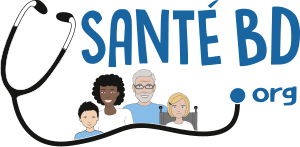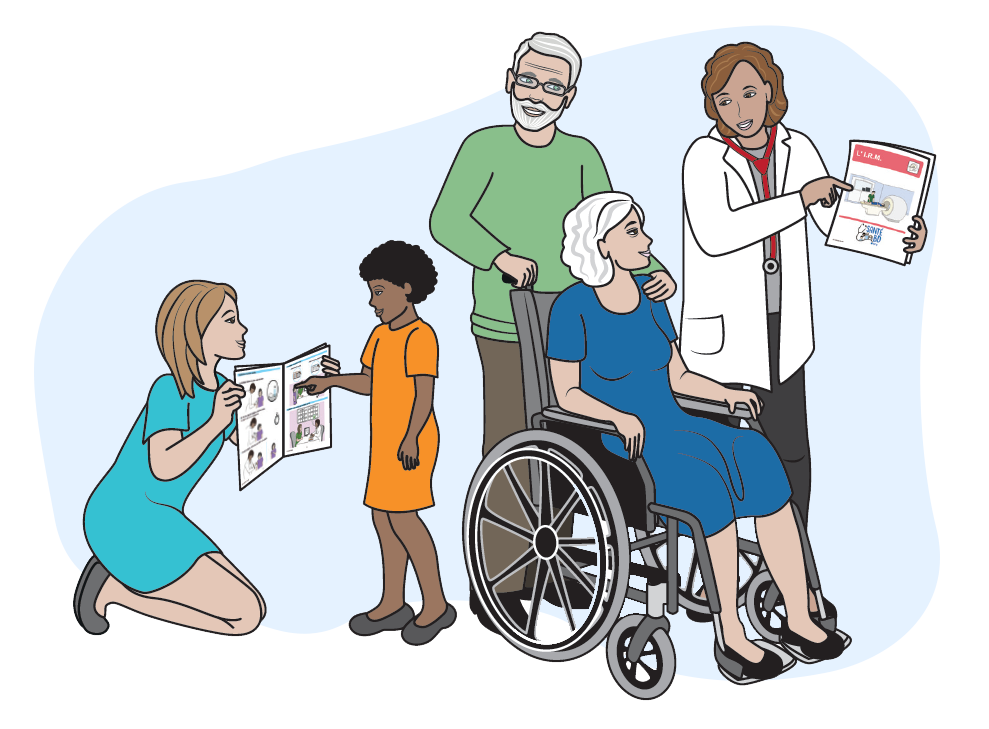Transcription textuelle de la BD Do I need glasses?
The ophthalmologist checks that my eyes move correctly
The ophthalmologist shows me an object.
I watch the object carefully.
I must not move my head.
The ophthalmologist can hold my head still to help me.
The ophthalmologist moves the object around in front of my eyes in all directions.
I have to follow the object with my eyes.
The ophthalmologist shows me a small light.
I look carefully at the light.
The ophthalmologist covers one of my eyes with an object.
I follow the small light with my eye without moving my head.
The ophthalmologist does the same for my other eye.
The ophthalmologist checks I can see things far away.
The ophthalmologist shows me some letters or pictures.
The letters or pictures get smaller and smaller.
The ophthalmologist covers one of my eyes.
I have to say what I can see, even if it is very small.
If I can’t talk, I can sign it or draw it on a board.
The ophthalmologist does the same for my other eye.
The ophthalmologist checks if I can see up close.
The ophthalmologist gives me a small board with letters or pictures.
The ophthalmologist shines a strong light on the board.
The ophthalmologist covers one of my eyes.
I must say what I can see, even if it is very small.
The ophthalmologist does the same for my other eye.
The ophthalmologist looks at my eyes with a machine.
Sometimes the machine:
- is on the table.
- Sometimes it is portable.
I always sit the same way for every kind of machine:
I lean forward.
I rest my chin on the machine.
I press my forehead gently against the machine.
I look straight in front of me.
The person who accompanies me can help me.
I must keep my head still.
I look straight ahead.
I can see a light in the machine. I keep my eyes wide open.
The machine measures my eyes.
These measurements tell if I need glasses.
If I need glasses, the ophthalmologist tries different lenses.
The ophthalmologist puts some funny looking glasses on me.
He opens a box of lenses.
He tries different lenses in the funny looking glasses.
I look at the pictures or letters.
I have to say when I can see better.
The ophthalmologist writes me a prescription for glasses.
I can go and choose some nice glasses at the optician’s store.
The translation of this tool was made possible thanks to the support of the Orange Foundation.
SantéBD booklets?
- On the internet: Visit the website: www.santebd.org
- On the SantéBD Channel Youtube
SantéBD booklets are free.
SantéBD is a project by the NGO Coactis Santé contact@santebd.org
SantéBD booklets are produced in partnership with different participants from the world of healthcare and working with disabilities. Illustrations by Frédérique Mercier.
Copyright Coactis Santé
The creation of this tool was made possible with the support of:
- la Fondation Handicap Malakoff Humanis
- la Fondation de France
- la mairie de Paris
- l’Assurance maladie
- la Caisse nationale de solidarité pour l’autonomie
- Santé publique France
This document was proofread by people with learning disabilities and respects the European Easy-to-Read Guidelines. These guidelines help to make information available for everyone.
For more information visit the website https://www.inclusion-europe.eu/easy-to-read/





